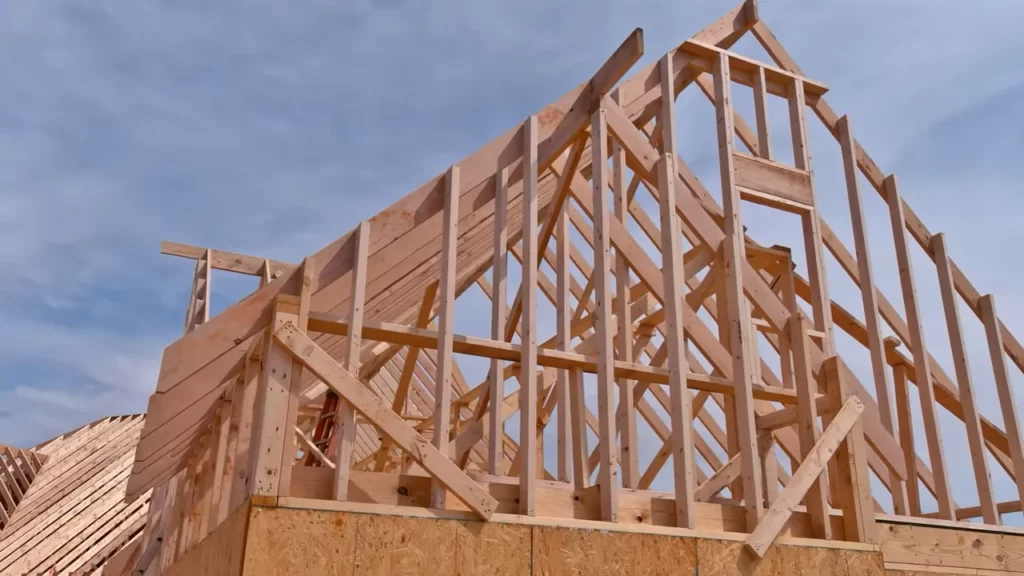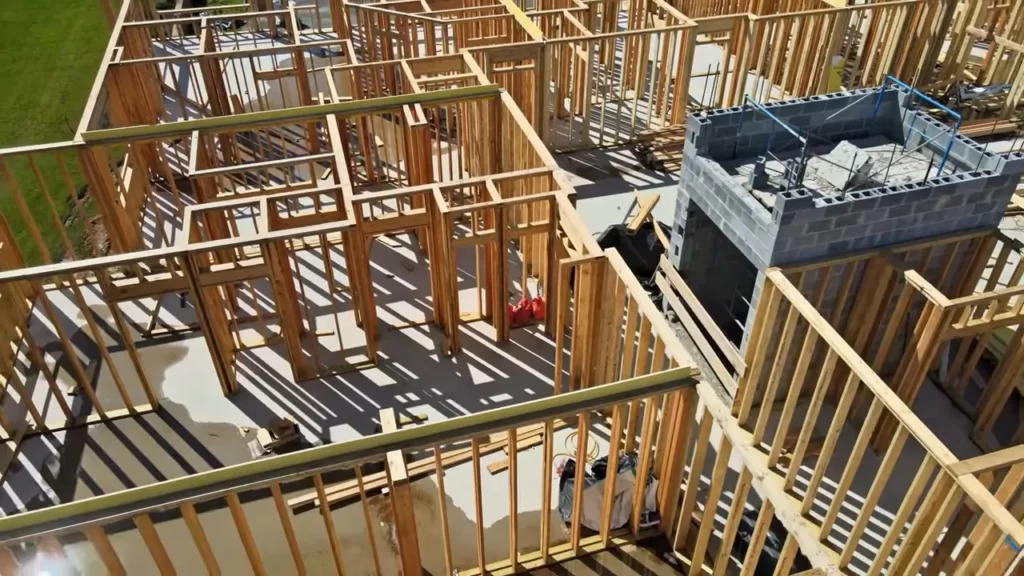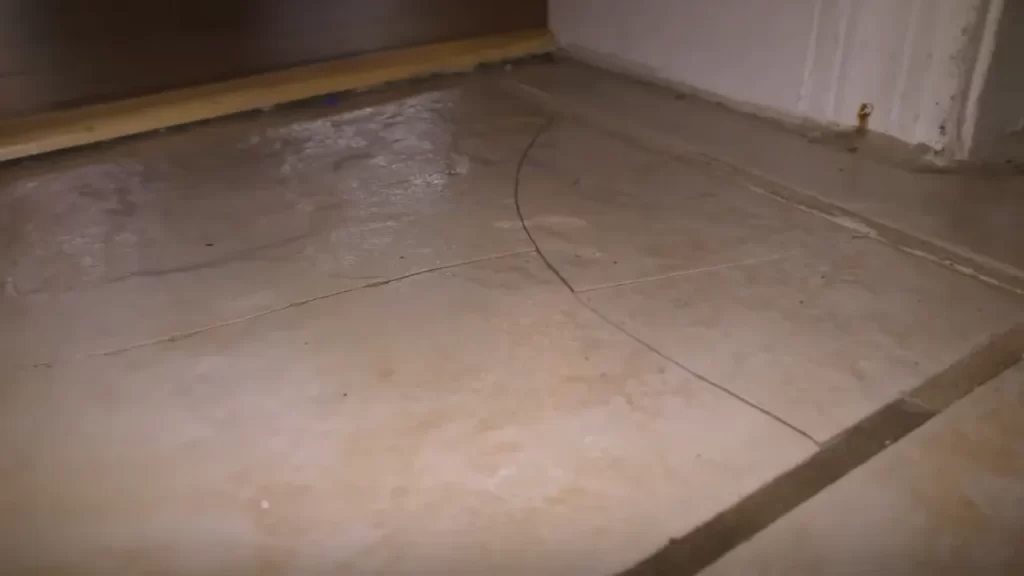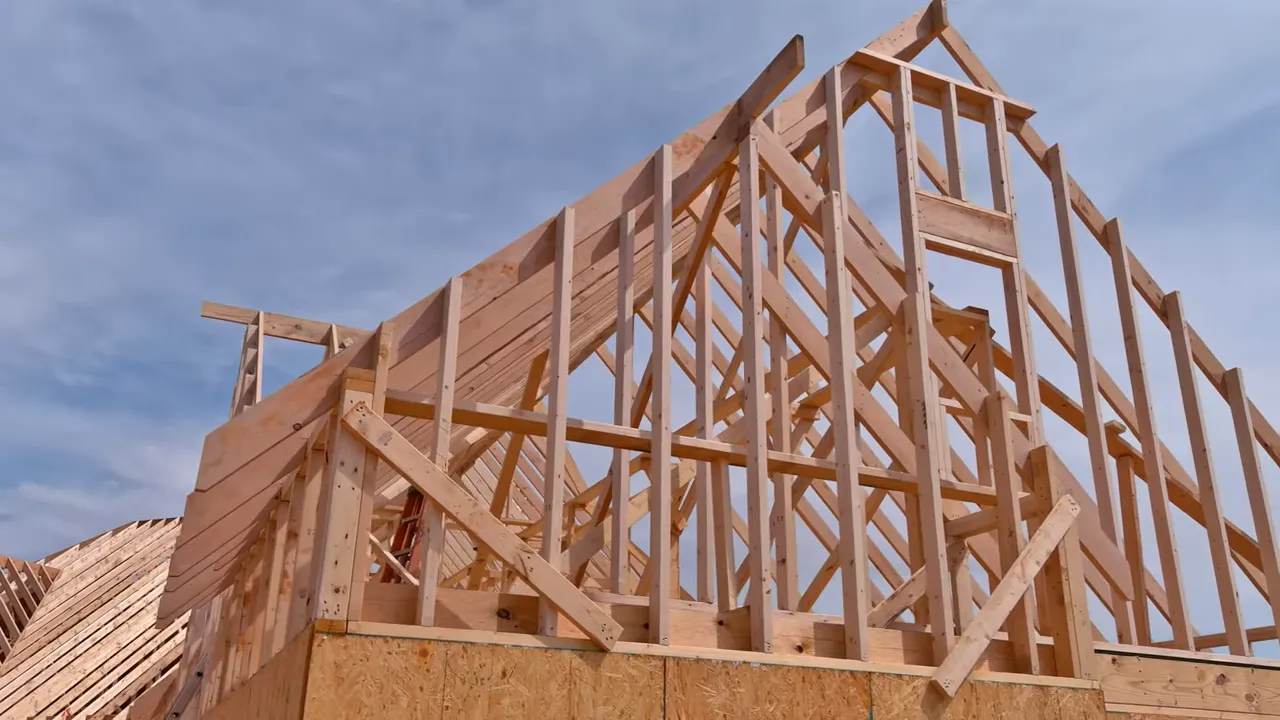Homes are more than just shelters; they’re intricate systems. Every light that flickers and every appliance that hums is a testament to the marvels of modern electrical infrastructure. Yet, amid the hums and flickers, a large popping sound can quickly shift one’s sense of wonder to concern.
Large popping sounds in a home’s electrical system typically indicate an anomaly, often stemming from issues with circuit breakers, faulty outlets, deteriorated wiring, or even arc faults. Such noises shouldn’t be ignored, as they might signal potential hazards.
The electrical ecosystem within a residence is vast and complex. While devices and systems are designed for safety and efficiency, wear and tear or external influences can challenge their integrity. Knowing the causes behind such alarming sounds equips homeowners to ensure the safety and functionality of their sanctuary.
Common Electrical Sounds
The symphony of a home’s electrical system is both comforting and fascinating. However, knowing the difference between standard operational noises and those hinting at deeper issues is crucial for any homeowner.
Normal Operating Noises
Almost all electrical systems produce sounds. It’s the nature of electricity and the appliances we use.
- Light Hum: Most electrical devices produce a gentle hum when they operate. It’s the sound of electricity itself, flowing through circuits and providing power.
- Switch Clicks: Light switches, circuit breakers, and certain types of fixtures create a noticeable click when turned on or off.
- Appliance-specific Noises: Different appliances have characteristic sounds. Refrigerators, for instance, have a distinct humming sound that varies in pitch during their cooling cycle.
Indicators of Potential Issues
Not all sounds are benign. Some can signal possible problems that demand immediate attention.
- Buzzing: Continuous buzzing from outlets or switches might indicate a faulty fixture or an overloaded circuit.
- Sizzling: A sizzling or crackling noise often suggests that there’s a live electricity discharge somewhere, possibly from a loose wire.
- Frequent Clicking: If you notice an unusual amount of clicking from a breaker or appliance, it could mean it’s struggling to maintain its circuit due to internal faults.

Reasons for Large Popping Sounds
Circuit Breakers & Panels
One of the most common sources of large popping sounds in a home’s electrical system is the circuit breaker or the main electrical panel.
Overloading Scenarios
Overloading happens when the demand for electricity on a circuit exceeds its capacity. When this occurs, circuit breakers trip to prevent potential hazards.
- Tripping Mechanism: Breakers are designed to trip, or shut off, when overloaded. The sound of a breaker tripping can sometimes resemble a pop.
- Immediate Reset: If an overloaded breaker is reset without addressing the root issue, it might trip again, leading to repeated popping sounds.
Damaged or Old Breakers
Age and wear can compromise the functionality of breakers.
- Internal Wear: Over time, the internal components of a breaker can wear out, causing them to malfunction and produce popping sounds.
- Loose Components: Within the breaker box, if components become loose or connections degrade, they can arc, producing a distinct pop.
Faulty Outlets & Switches
After the breaker box, outlets and switches are the next most likely culprits for popping sounds.
Worn-out Internal Components
The components inside outlets and switches can degrade over time.
- Internal Arcing: As components degrade, they can cause arcing within the switch or outlet, resulting in a popping noise.
- Material Breakdown: The materials used in outlets and switches can degrade, leading to internal short circuits and the resulting popping sound.
Loose Wire Connections
Connections that aren’t secure can be dangerous.
- Wire Movement: Loose wires can move, touch other components, or become disconnected, leading to arcing and the familiar popping sound.
Deteriorated Wiring
The wiring in a home, hidden within the walls, can also be a source of popping sounds.
Aging and Wear
Old homes especially might have wiring that’s past its prime.
- Insulation Breakdown: The insulation around wires can break down over time, leading to exposed wires that might touch and arc.
- Metal Fatigue: Repeated heating and cooling can cause wires to become brittle and snap, resulting in a popping sound when they break.
External Damage or Pests
Factors outside of normal wear can also damage wiring.
- Physical Damage: Renovations, drilling into walls, or even heavy vibrations can damage wiring, leading to short circuits and pops.
- Pests: Rodents can chew through wire insulation, exposing the wires and leading to potential short circuits.

Expanding & Contracting Materials
The materials used in electrical installations can react to temperature changes.
Effect of Temperature Changes
Temperature fluctuations can cause materials to expand and contract.
- Metal Parts: Metal components in the electrical system can expand when heated and contract when cooled, sometimes leading to a pop or snap sound.
- Plastic Components: Some plastic parts can also react to temperature changes, potentially resulting in popping sounds.
Physical Structure Impacts
The house itself can play a role in these sounds.
- Wall Movement: As the house settles or reacts to temperature changes, it can cause slight movements in the electrical components, leading to popping sounds.
- External Influences: External factors, like strong winds or heavy rains, can also affect the house’s structure and, in turn, the electrical system.
Arc Faults
Arc faults are dangerous and a common reason for popping sounds in electrical systems.
What are they?
Arc faults occur when electricity discharges unexpectedly between two points in an electrical system.
- Unintended Pathways: Rather than following its intended path, electricity in an arc fault travels outside of the normal circuit.
- Heat Production: Arc faults produce significant heat, which can damage surrounding materials and pose fire risks.
Conditions Leading to Arc Faults
Certain conditions can increase the likelihood of arc faults.
- Damaged Wires: Wires that are damaged or compromised in some way are more prone to arc faults.
- Loose Connections: Connections that aren’t secure can also lead to arc faults, as they provide a point where electricity might find an unintended path.

Potential Dangers
It’s essential to address popping sounds in your home’s electrical system promptly, as they can indicate serious risks.
Fire Hazards
Perhaps the most significant risk associated with popping sounds in an electrical system is the potential for fire.
Electrical Fires: Stats and Facts
Electrical issues are a leading cause of home fires. Faulty wiring, overloaded circuits, and malfunctioning appliances can all lead to fires.
- Rapid Spread: Once started, electrical fires can spread rapidly, especially if they ignite surrounding materials.
- Hidden Danger: Since much of a home’s electrical system is hidden within walls, an electrical fire might go unnoticed until it’s too late.
Immediate Actions to Consider
If you suspect an electrical fire or notice signs of one:
- Cut Power: Turn off the main electrical breaker to cut power to the house.
- Evacuate: Get everyone out of the house and call 911.
Electrical Shocks
Another significant risk associated with electrical anomalies is the potential for electrical shocks.
Severity Levels
The severity of an electrical shock can vary based on several factors.
- Voltage: Higher voltages generally result in more severe shocks.
- Duration: The length of time someone is exposed to the electricity can also affect the severity.
Safety Precautions
To protect yourself and others:
- Avoid Contact: If you suspect an electrical issue, avoid touching any potentially compromised components.
- Use Protection: Always use insulated tools and wear protective gloves when working with electricity.
Quick Fixes & Temporary Solutions
Before diving into long-term solutions, there are often quick fixes that can be applied to address minor electrical issues.
Resetting Circuit Breakers
A tripped circuit breaker is a common issue in many homes. It’s essential to know when and how to reset them properly.
When and How to Reset
A breaker usually trips when there’s an overload.
- Identify the Tripped Breaker: It will typically be in the “off” position or in a middle position.
- Turn Off All Devices: Before resetting, turn off devices connected to that circuit.
- Reset the Breaker: Push the breaker firmly to the “off” position, then flip it back to “on.”
Signs of Requiring Professional Help
If the breaker trips frequently or immediately after resetting, it’s a signal for deeper issues.
- Frequent Tripping: Regularly tripping breakers indicate potential overloads or faulty wiring.
- Immediate Tripping: If a breaker trips right after being reset, there might be a short circuit.
Outlet & Switch Checks
Regular checks of outlets and switches can prevent significant issues down the line.
Visual Inspections
A simple visual check can reveal a lot.
- Burn Marks: Discoloration around outlets might indicate arcing or overheating.
- Physical Damage: Broken or cracked outlets should be replaced immediately.
Safe Unplugging Technique
Always practice safety when working with electricity.
- Grasp the Plug: Pull the plug, not the cord, to prevent damage.
- Avoid Force: If a plug is stuck, wiggle it gently. Forcing it out can damage the outlet.
Limit Electrical Load
Overloading circuits is a common issue in modern homes with numerous electrical devices.
Identify Overburdened Circuits
Recognizing the symptoms of an overloaded circuit is crucial.
- Frequent Breaker Trips: As mentioned, a repeatedly tripping breaker can indicate an overload.
- Dimming Lights: Lights that dim when appliances turn on might be a sign.
Distribute Appliances and Devices
Balancing the load is key.
- Spread Out High-Wattage Devices: Don’t plug multiple high-powered devices into a single circuit.
- Use Power Strips Sparingly: While they’re convenient, don’t overload power strips with too many devices.
Professional Solutions
Some electrical issues demand the expertise of a professional.
Electrical System Assessment
A full assessment of your electrical system can pinpoint potential problems.
Role of Certified Electricians
A certified electrician is trained to identify and address various electrical issues.
- Thorough Checks: Electricians can test every component of your system for potential issues.
- Safety Assurance: They ensure everything is up to code and safe for home use.
Importance of Regular Checks
Routine checks prevent minor problems from becoming major ones.
- Early Detection: Identify potential issues before they escalate.
- Cost Savings: Addressing problems early can save money in the long run.
Upgrade & Replacement
As homes and electrical needs evolve, so should your electrical system.
When to Consider System Upgrades
Certain signs indicate the need for an upgrade.
- Frequent Issues: If you’re constantly resetting breakers or replacing fuses, consider an upgrade.
- Old Systems: Homes with wiring more than 25 years old should be inspected and possibly upgraded.
Benefits of Modern Electrical Components
Newer components offer several advantages.
- Enhanced Safety: Modern systems often have better safety features.
- Improved Efficiency: New installations tend to be more energy-efficient.
Home Safety Installations
Certain installations can dramatically increase the safety of your home.
Surge Protectors
A surge protector shields your electronics from power spikes.
- Protection from Spikes: They absorb excess electrical energy, preventing it from reaching connected devices.
- Extended Device Lifespan: Regular surges can shorten the lifespan of electronics.
Ground Fault Circuit Interrupters (GFCIs)
GFCIs are essential in areas where water and electricity might mix.
- Immediate Trip: GFCIs cut off power instantly if they detect a ground fault.
- Lifesaving: They can prevent potentially fatal electrical shocks.
Arc-Fault Circuit Interrupters (AFCIs)
AFCIs protect against arc faults, a leading cause of electrical fires.
- Detect Arcing: AFCIs can identify and interrupt arcing before it becomes a fire hazard.
- Mandatory in New Homes: Modern building codes often require AFCIs in certain areas of new homes.
Prevention Tips
Proactive measures can save a lot of time, money, and potential danger down the road.
Regular Maintenance
Keeping up with maintenance can prevent many issues.
Key Areas to Monitor
Certain parts of your electrical system require special attention.
- Breaker Box: Ensure all connections are tight and components are in good condition.
- Outlets and Switches: Regularly check for signs of wear or damage.
Benefits of a Proactive Approach
Being proactive pays off.
- Peace of Mind: Knowing your system is in good shape is comforting.
- Long-Term Savings: Addressing small issues early can prevent expensive repairs later.
Safe Electrical Practices
Always prioritize safety when working with or around electricity.
Proper Plug-In Methods
Plugging devices in properly can prevent damage and hazards.
- Match Prong to Slot: Ensure the prong configuration matches the outlet.
- Fully Insert Plugs: Partially exposed prongs can be a shock hazard.
Avoiding Daisy Chaining
Daisy chaining, or plugging multiple power strips together, can be dangerous.
- Potential Overloads: Daisy chaining can lead to circuit overloads.
- Fire Hazard: Overheating power strips can ignite and cause fires.
Frequently Asked Questions
Why does my electrical outlet make a popping sound?
A popping sound from an outlet usually results from a short circuit caused by loose wires or a malfunctioning outlet. It’s essential to address this immediately to prevent potential fire hazards.
Are popping sounds in electrical systems dangerous?
Yes, these sounds can indicate potential fire risks or hazards related to electrical shocks. It’s always best to consult an expert if you notice such noises frequently.
How often should I get my electrical system checked?
Ideally, homeowners should have their electrical systems professionally inspected every 3-5 years. However, if you observe any anomalies like frequent popping sounds, it’s advisable to get it checked sooner.
Can I fix the popping noise issue myself?
While minor issues can be addressed with basic knowledge, it’s always safer to rely on professionals, especially when dealing with electrical systems. An incorrect fix can pose greater risks.
Conclusion
Electrical anomalies, characterized by sounds like large pops, serve as wake-up calls. Ignoring them might compromise the very systems designed to provide convenience and comfort. Proactive action not only safeguards the home but also its inhabitants.
Recognizing the implications of such sounds and their underlying causes can be life-saving. Every pop, buzz, or crackle underscores the need for vigilance, timely intervention, and respect for the intricate electrical dance happening behind walls.
In our modern age, where homes are increasingly dependent on electricity, awareness and prompt response to any signs of electrical malfunction are paramount. Stay informed, stay vigilant, and always prioritize safety.
